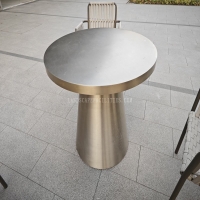Welcome to the website for landscape facilities products and knowledge.
What are the differences in assembly requirements between various types of landscape chairs?
When it comes to setting up outdoor furniture, understanding the assembly requirements for different types of landscape chairs is crucial. The process can vary significantly based on materials, design, and intended use. Here’s a breakdown of the key differences:
1. Material Variations:
- Metal Chairs: Often require minimal assembly, usually involving attaching legs or arms with pre-drilled holes and included screws. A wrench or screwdriver is typically needed.
- Wooden Chairs: May need more intricate assembly, including sanding, staining, or sealing. Tools like a hammer, nails, or wood glue might be necessary.
- Plastic/Resin Chairs: These are often lightweight and may snap together without tools, though some models require basic screw fastening.
2. Design Complexity:
- Folding Chairs: Usually pre-assembled or require simple hinge adjustments.
- Modular or Sectional Chairs: These may involve connecting multiple pieces, requiring precise alignment and additional hardware.
- Adirondack Chairs: Often come in kits with numerous parts, demanding careful step-by-step assembly.
3. Tool Requirements:
- Basic tools like screwdrivers, wrenches, or hammers are common for metal and wooden chairs.
- Plastic chairs may need no tools at all, while high-end designs might include specialized hardware.
4. Time and Skill Level:
- Metal and plastic chairs are generally quicker to assemble, suitable for beginners.
- Wooden or custom-designed chairs may take hours and require intermediate DIY skills.
By considering these factors, you can choose landscape chairs that match your assembly preferences and outdoor needs. Always refer to the manufacturer’s instructions for the best results.
Related search:

Recommendation
Outdoor Metal Table - Classic Outdoor Furniture, Stainless Steel Table, Durable and Reliable